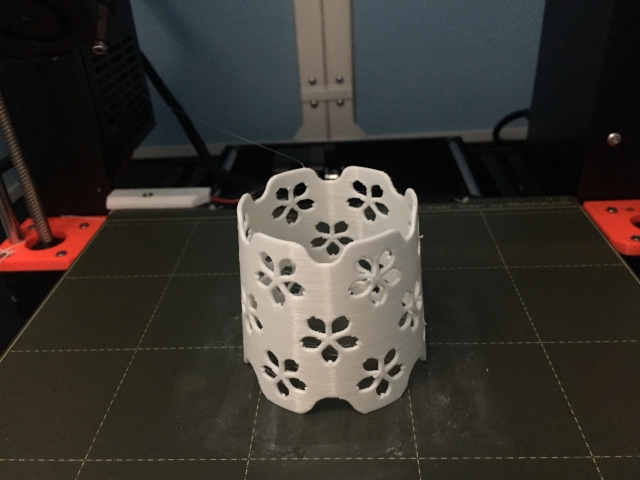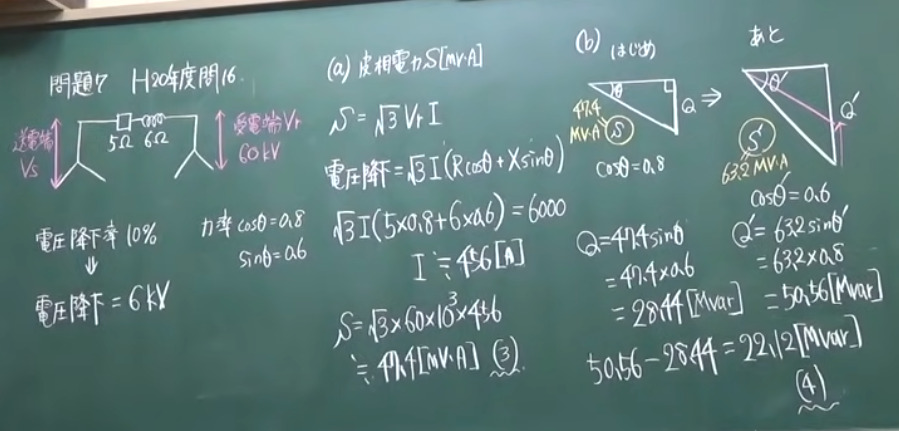ネット上のコンテンツ制作者にとって、2021年はNFTが避けて通れないテーマとなりました。
信じられないような猿のプロフィール写真から、故人への理解しがたいほど無味乾燥な賛辞まで。ミームの「オリジナル・コピー」が6桁の売上を記録したこともある。
デジタルアーティストの脳内空間を支配し、室内の酸素をすべて吸い取っているのです。NFTやデジタル技術に関する私の意見についてもお話ししたいと思います。
所有権や希少性など、この問題には無数の側面がありますが、私はそうではなく
NFTのことだけを話したいわけではありません。
の象徴であり、最終的に重要なのはその「もっと」なのです。
そこで、ある話をさせてください。
In 2008 the economy functionally collapsed.
The basic chain reaction was this:
Banks came up with a thing called a mortgage-backed security,
a financial instrument that could be traded or collected that was based on a bundle
of thousands of individual mortgages. Based on the general reluctance of banks to issue mortgages,
the risk-aversion in lending someone hundreds of thousands of dollars that they’ll pay off
over the course of decades, these bonds were seen as especially stable. However
they were also immensely profitable for the banks who both issue the mortgages and the bonds.
Because of that perceived stability a lot of other financial organizations,
like pension funds and hedge funds, used them as the backbone of their investment portfolio.
In this arrangement a mortgage becomes more profitable to the bank issuing the mortgage
as a component of a bond than it is as a mortgage. Proportionally the returns per
mortgage from the bond are just that much better than the returns from the isolated mortgage.
There’s some problems, though. Problem one is that the biggest returns on a bond come from
when it first hits the market, a new bond that creates new securities sales is worth
more than an old bond that is slowly appreciating, but not seeing much trade. Problem two
is that there are a finite number of people and houses in America;
the market has to level out at a natural ceiling as eventually all or nearly all
mortgages are packaged into bonds, thus very few new bonds can be generated and sold.
So here’s the incentives that are created.
One: it’s good for banks if there are more houses that they can issue mortgages for
Two: the more mortgages issued the better, because a bad mortgage is
worth more as a component of a bond than a good mortgage that’s not part of a bond.
So real estate developers find that they have a really easy time getting funding from banks for
creating vast new suburbs full of houses that can be sold to generate mortgages,
but rather than building the kind of housing most people actually need and want,
they focus specifically on the kinds of upper-middle-class houses that fit into the sweet
spot from the perspective of the banks packaging the bonds. Buyers, in turn, find that they have a
suspiciously easy time getting a mortgage despite the fact that, for most people, the economy wasn’t
doing so great. Wages were stagnant and yet even though developers were going absolutely haywire
building new housing, the houses being built were all out of their price range to begin with,
and counter intuitively this massive increase in supply wasn’t driving down the price.
This is because the houses were being bought, just mostly not by people intending to live in them.
They were being bought by speculators who would then maybe rent them out or often just
leave them vacant with the intent to sell a couple years later.
Because speculators were buying up the supply it created synthetic demand. The price keeps
going up because speculators keep buying, which creates the illusion that the value is going up,
which attracts more speculators who buy up more supply and further inflate the price.
These speculators are enabled by a system that is prioritizing generating new mortgages
purely for the sake of having more mortgages to package into bonds.
The down payments are low and the mortgages all have a really attractive teaser rate,
meaning that for the first three to seven years of the mortgage the monthly payments are rock bottom,
as low as a few hundred dollars per month against a mortgage that would normally charge thousands.
Caught up in all this are legitimate buyers who have been lured into signing
for a mortgage that they can’t afford by aggressive salespeople who have an
incentive to generate mortgages that they can then sell to a bank who can put it into a bond
to sell to pension funds to make a line go up, because it’s good when the line goes up.
It’s a bubble.
The bubble burst as the teaser rates on the mortgages started to expire,
the monthly cost jumped up, and since the demand was synthetic
there were no actual buyers for the speculators to sell the houses to.
So the speculators start dumping stock, which finally drives prices down, but because the
original price was so inflated the new price is still out of reach of most actual buyers.
Legitimate buyers caught in the middle find their rates jumping, too,
but because the price of the house is going down as speculators try and dump their stock
the price of the house goes down relative to the mortgage issued,
and thus they can’t refinance and are locked into paying the original terms.
Unable to sell the house and unable to afford the monthly payments,
the owners, legitimate and speculators, default on their mortgages, they stop paying.
Eventually the default rate reaches criticality and the bonds fail.
As the bonds fail this impacts all the first order buyers of the bonds, hedge funds, pension funds,
retirement savings funds, and the like. It also cascades through all derivatives,
which are financial products that take their value directly from the value of the bond.
This creates a knock-on effect: huge segments of the economy turn out to be dead trees,
rotten to the core, but as a rotten tree falls
it still shreds its neighbours and crushes anything below it.
It was a failure precipitated by a combination of greed, active fraud,
and willful blindness at all levels of power. The banks issuing the bad mortgages were the same
banks selling the bonds and providing the capital to build the houses to generate the mortgages.
The ratings agencies checking the bonds were, themselves, publicly traded and dependent
on being in good relations with the banks, incentivized to rubber stamp whatever rating
would make their client happy. The regulatory agencies that should have seen the problem coming
were gutted by budget cuts and mired in conflicts of interest as employees
used their positions in regulation to secure higher paying jobs in industry.
And, the cherry on top, the people largely responsible for it all knew that because they
and their toxic products were so interwoven into the foundations of the economy they could count
on a bailout from the government because no matter how rotten they were, they were very large trees.
2008年、経済は機能的に崩壊した。
基本的な連鎖反応はこうでした。
銀行がモーゲージ担保証券と呼ばれるものを考え出した。
取引や回収が可能な金融商品で、束になったものをベースにしています。
何千もの個々の住宅ローンの 銀行が住宅ローンの発行に消極的であったことが背景にあります。
何十万円もするお金を貸して、それを返済してもらうというリスク回避のために
何十年もかけて作られるこの債券は、特に安定性が高いと考えられていた。しかし
住宅ローンと債券の両方を発行する銀行にとっては、莫大な利益をもたらすものでもあったのです。
その安定性から、他の多くの金融機関も、住宅ローンや債券を発行する銀行も、莫大な利益を得ることができた。
年金基金やヘッジファンドのように、投資ポートフォリオのバックボーンとして利用されるようになった。
このような仕組みでは、住宅ローンを発行する銀行にとって、住宅ローンはより収益性の高いものになる。
抵当権としてよりも債券の構成要素として 比例して、1件当たりのリターンは
債券から得られる抵当権は、単独の抵当権から得られる収益よりも、それだけ優れているのです。
しかし、いくつかの問題があります。
問題点は、債券の最大のリターンは、以下の時期に発生することです。
新しい債券が市場に出回るとき、新しい証券売上を生み出す新しい債券は価値がある。
ゆっくりと価値を高めていくが、あまり取引されていない古い債券よりも。
問題点2
は、アメリカの人と家の数には限りがあることです。
最終的にはすべて、あるいはほとんどすべての住宅が、自然の天井で水平にならざるを得ない。
住宅ローンは債券にパッケージ化されるため、新たに債券を発行して販売することはほとんどできません。
そこで、以下のようなインセンティブが生まれる。
1:銀行にとって、住宅ローンを発行できる住宅が増えることは良いことである。
2:住宅ローンの発行件数が多ければ多いほど良い、なぜなら不良住宅ローンは債券の構成要素としての価値は、債券の構成要素でない良い抵当権よりも高い。ですから、不動産開発業者は、銀行から資金を調達するのが実に簡単であることに気づきます。
広大な郊外に家を建てて、それを売ることで住宅ローンを生み出す。
しかし、多くの人が実際に必要とし、望んでいる住宅を建てるのではなく
特に、アッパーミドルクラスの住宅に焦点を当てます。
銀行が債券をパッケージングする際の視点となる。
その結果、購入者は、自分たちが有利になることを知る。
多くの人にとって不景気であったにもかかわらず、住宅ローンを組むのは怪しく簡単なことでした。
ということです。賃金は伸び悩み、デベロッパーは大混乱に陥っているのに
新築の住宅を建てても、そもそも価格帯が合わないものばかりでした。
直感に反して、この大量供給が価格を下げなかったのです。
しかし、直感的には、この大量供給は価格を下げる要因にはならない。
投機筋が買っていたのである。
数年後に売るつもりで、空き家のままにしておくのです。
投機筋が供給を買い占めたため、合成需要が発生したのです。価格は下がり続け
投機筋が買い続けるので、価値が上がっているように錯覚してしまうのです。
その結果、より多くの投機家が集まり、より多くの供給を買い占め、価格をさらに上昇させる。
このような投機家は、新しい住宅ローンを生み出すことを優先するシステムによって可能になります。
純粋に、債券にするための住宅ローンを増やすためだ。
頭金が少なく、魅力的なティーザーレートの住宅ローンばかりだ。
つまり、最初の3年から7年の間、月々の支払いは最低限に抑えられるのです。
通常、数千ドルかかる住宅ローンに対して、月々数百ドルという安さだ。
このような事態に巻き込まれたのは、正規の購入者である。
を持つ強引なセールスマンによって、払えないほどの住宅ローンが組まれた。
抵当権を設定し、それを銀行に売り、銀行はそれを債券に組み入れることができる。
年金基金に売ってラインを上げる。ラインが上がればいいのだから。
バブルなんです。
住宅ローンのティーザーレートの期限が切れ始めると、バブルは崩壊した。
月々のコストが跳ね上がり、しかも需要が合成だったため投機筋が家を売るための実際の買い手がいなかったのです。
そこで投機筋が株を投げ売りし始め、ついに価格が下がるのですが、その理由は
このように、元の価格があまりにも高騰していたため、新しい価格は実際の購入者のほとんどに手が届かない。
その間に挟まれた正規の購入者も、料金が跳ね上がることになる。
しかし、投機筋が株を捨てようとするため、家の価格は下がっているので
住宅ローンを組んだ分、家の値段が下がる。
そのため、借り換えができず、元の条件で支払わなければならなくなる。
家を売ることができず、月々の支払いに余裕がない。
所有者である合法的な投機家は、住宅ローンを不履行にし、支払いを停止する。
やがてデフォルト率は臨界に達し、債券は破綻する。
債券が破綻すると、債券の一次購入者であるヘッジファンドや年金基金に影響が及ぶ。
退職金積立ファンドなど また、すべてのデリバティブに連鎖する。
債券の価値から直接的に価値を得ている金融商品である。
これは、経済の巨大な部分が枯れ木と化すという、連鎖的な効果を生む。
芯まで腐った木が倒れる。
それでも隣をズタズタにし、下のものを押しつぶす。
強欲と不正の組み合わせが招いた失敗だった。
そして、あらゆるレベルの権力者の故意の盲目さである。 不良住宅ローンを発行した銀行も、同じように
住宅を建てるための資金を提供し、債券を販売する銀行。
債券をチェックする格付け機関は、それ自体が上場企業であり、その格付けに依存していた。
銀行と良好な関係にあることで、どんな格付けでもゴム印を押すように動機付けされている。
を、クライアントが喜ぶようにする。この問題が起こることを予見していたはずの監督官庁は
予算削減と利益相反に悩まされることになった。
産業界でより高収入の仕事を得るために、規制当局の立場を利用したのだ。
そして極めつけは、このような事態を招いた張本人たちは、自分たちが「傲慢」であることを知っていたのです。
そしてその有害な製品は、経済の根幹に深く入り込んでいる。
どんなに腐っていても、大きな木なので、政府から救済を受けることができる。
This naked display of greed and fraud created what would be fertile soil for
both anti-capitalist movements and hyper-capitalist movements:
both groups of people who saw themselves as being screwed over by the system, with one
group diagnosing the problem as the system’s inherently corrupt and corrupting incentives,
and the other seeing the crisis as a consequence of too much regulation, too much exclusion.
The hyper-capitalist, or anarcho-capitalist argument is that in a less constrained
market there would be more incentive to call foul, that regulation had only succeeded in
creating an in-group that was effectively able to conspire without competition.
Of course this argument fails to consider that a substantial number of
people within the system did, in fact, get fabulously wealthy specifically by betting
against the synthetic success of the market, but regardless.
Into this environment in 2009 arrived Bitcoin, an all-electronic peer-to-peer currency.
Philosophically Bitcoin, and cryptocurrency in general,
was paraded as an end to banks and centralized currency.
This is what will form the bedrock, both philosophical and technological,
that NFTs will be built on top of. It’s a bit of a hike
from here to the Bored Ape Yacht Club, so I guess get ready for that. Strap in.
As we get into this we’re going to need to deal with a lot of vocabulary, and a lot of complexity.
Some of this is the result of systems that are very technically intricate,
and some of this is from systems that are poorly designed or deliberately
obtuse in order to make them difficult to understand and thus appear more legitimate.
The entire subject sits at the intersection of two fields that are notoriously prone to
hype-based obfuscation, computer tech and finance, and inherits a lot of bad habits from both,
with a reputation for making things deliberately more difficult to understand
specifically to create the illusion that only they are smart enough to understand it.
Mining and minting are both methods for making tokens, which are the base thing that blockchains
deal with, but the two are colloquially different processes, where mining is a coin token created as
a result of the consensus protocol and minting is a user-initiated addition of a token to a
blockchain. All blockchains are made of nodes, and these nodes can be watcher nodes, miner nodes,
or validator nodes, though most miner nodes are also validator nodes. Fractionalization is the
process of taking one asset and creating a new asset that represents portions of the original.
So you get $DOG, a memecoin crypto DeFi venture capital fund backed by the fractionalization of
the original Doge meme sold as an NFT to PleasrDAO on the Ethereum network.
I’m sorry, some of this is just going to be like that.
The idea behind cryptocurrency is that your digital wallet functions the same as
a bank account, there’s no need for a bank to hold and process your transactions because
rather than holding a sum that conceptually represents physical currency, the cryptocoins
in your cryptowallet are the actual money. And because this money isn’t issued by a government
it is resistant to historical cash crises like hyperinflation caused by governments devaluing
their currency on purpose or by accident. It brings the flexibility and anonymity of cash and
barter to the digital realm, allowing individuals to transact without oversight or intermediaries.
And in a one-paragraph pitch you can see the appeal, there’s a compelling narrative there.
But, of course, in the twelve years since then none of that played out as designed.
Bitcoin was structurally too slow and expensive to handle regular commerce.
The whole thing basically came out the gate as a speculative financial vehicle
and so the only consumer market that proved to be a viable use
was buying and selling prohibited drugs where the high fees, rapid price fluctuations,
and multi-hour transaction times were mitigated by receiving LSD in the mail a week later.
And as far as banking is concerned, Bitcoin was never designed to solve the actual problems
created by the banking industry, only to be the new medium by which they operated. The principal
offering wasn’t revolution, but at best a changing of the guard. The gripe is not with the outcomes
of 2008, but the fact that you had to be well connected in order to get in on the grift in 2006.
And even the change of the guard is an illusion. Old money finance assholes like the Winkelvoss
twins were some of the first big names to jump on to crypto, where they remain to this day.
Financial criminal Jordan Belfort, convicted of fraud for running pump and dump schemes and barred for life from trading regulated securities or acting as a broker, loves Crypto.
Venture capitalist Chris Dixon, who has made huge bank off the “old web” in his
role as a general partner at VC firm Andreessen Horowitz Capital Management, is super popular
in the NFT space. He likes to paint himself as an outsider underdog fighting the gatekeepers,
but he also sits on the boards of Coinbase, a large cryptocurrency
exchange that makes money by being the gatekeeper collecting a fee on
all entries and exits to the crypto economy, and Oculus VR, which is owned by Meta, nee Facebook.
Peter Thiel, who also went from wealthy to ultra-wealthy off the Web2 boom via PayPal,
loves crypto, and is friends with a bunch of eugenics advocates who
promote cryptocurrency as a return to “sound money” for a whole bunch of extremely racist
reasons because when they start talking about banks and bankers, they mean Jews.
Some of the largest institutional holders of cryptocurrency
are the exact same investment banks that created the subprime loan crash.
Rather than being a reprieve to the people harmed by the housing bubble,
the people whose savings and retirements were, unknown to them,
being gambled on smoke, cryptocurrency instantly became the new playground for smoke vendors.
This is a really important point to stress: cryptocurrency does nothing to address 99% of
the problems with the banking industry, because those problems are patterns of human behaviour.
They’re incentives, they’re social structures, they’re modalities. The problem is what people
are doing to others, not that the building they’re doing it in has the word “bank” on the outside.
In addition to not fixing problems, Bitcoin also came with a pretty substantial drawback.
The innovation of Bitcoin over previous attempts at digital currency was to employ a distributed
append-only ledger, a kind of database where new entries can only be added to the end, and then to
have several different nodes, called validators, compete over who gets to validate the next update.
These are, respectively, the blockchain, and proof-of-work verification.
Now, proof-of-work has an interesting history as a technology, typically being
deployed as a deterrent to misbehaviour. For example, if you require that for every email
sent the user’s computer has to complete a small math problem it places a trivial load
onto normal users sending a few dozen, or even a couple hundred emails a day,
but places a massive load on the infrastructure of anyone attempting to spam millions of emails.
How it works in Bitcoin, simply put, is that when a block of transactions are
ready to be recorded to the ledger all of the mining nodes in the network compete with one
another to solve a cryptographic math problem that’s based on the data inside the block.
Effectively they’re competing to figure out the equation that yields a specific result
when the contents of the block are fed into it, with the complexity of the desired result
getting deliberately more difficult based on the total processing power available to the network.
Once the math problem has been solved the rest of the validation network can easily
double-check the work, since the contents of the block can be fed into the proposed solution
and it either spits out the valid answer or fails.
If the equation works and the consensus of validators signs off on it the block
is added to the bottom of the ledger and the miner who solved the problem first
is rewarded with newly generated Bitcoin.
The complexity of the answer that the computers are trying to solve scales up based on the
network’s processing power specifically to incur heavy diminishing returns as a protection
against an attack on the network where someone just builds a bigger computer and takes over.
Critics pointed out that this created new problems:
adversarial validation would deliberately incur escalating processing costs, which would in turn
generate perverse structural incentives that would quickly reward capital holders
and lock out any individual that wasn’t already obscenely wealthy, because while the escalating
proof-of-work scheme incurs heavy diminishing returns, diminishing returns are still returns,
so more would always go to those with the resources to build the bigger rig.
No matter what Bitcoin future was envisioned,
in the here and now computer hardware can be bought with dollars.
Rather than dismantling corrupt power structures,
this would just become a new tool for existing wealth.
And that’s… exactly what happened.
Thus began an arms race for bigger and bigger processing rigs, followed by escalating demands
for the support systems, hardware engineers, HVAC, and operating space needed to put those rigs in.
And, don’t worry, we’re not forgetting the power requirements.
These rigs draw an industrial amount of power and, because of the winner-takes-all
nature of the competition, huge amounts of redundant work are being done and discarded.
Estimates for this power consumption are hard to verify, the data is very complex,
spread across hundreds of operators around the globe, who move frequently
in search of cheap electricity, and it’s all pretty heavily politicized.
But even conservative estimates from within the crypto-mining industry puts the sum energy cost
of Bitcoin processing on par with the power consumption of a small industrialized nation.
Now, evangelists will counter that the global banking industry also uses a lot of power,
gesturing at things like idle ATMs humming away all night long, which is strictly speaking,
not untrue. On a factual level the entire global banking industry does,
in fact, use a lot of total electricity.
But, for scale, it takes six hours of that sustained power draw for the Bitcoin network
to process as many transactions as VISA handles in one minute,
and during that time VISA is using fractions of a cent of electricity per transaction.
And that’s just VISA. That’s one major institution.
So, like, yes, globally the entirety of the banking industry consumes a lot of power,
and a non-trivial portion of that is waste that could be better allocated.
But it’s also the global banking industry for seven billion people,
and not the hobby horse of a few hundred thousand gambling addicts.
So just to head all this off at the pass, Bitcoin and proof-of-work cryptocurrency aren’t
incentivizing a move to green energy sources, like solar and wind, they are offsetting it.
Because electrical consumption, electrical waste, is the value that underpins Bitcoin.
Miners spend X dollars in electricity to mine a Bitcoin, they expect to be able to
sell that coin for at least X plus profit. When new power sources come online and the
price of electricity goes down, they don’t let X go down, they build a bigger machine.
このように強欲と詐欺がむき出しになったことで、後に肥沃な土壌となるものが生まれた。
反資本主義運動と超資本主義運動の両方がある。
自分たちがシステムに騙されていると考える人々の集団であり、一方が
この問題は、システムが本質的に腐敗し、インセンティブを堕落させるものであると診断しています。
もう一方は、危機を過剰な規制と排除の結果と見なした。
超資本主義者、あるいは無政府資本主義者の主張は、より制約の少ない状況では
規制が成功したのは、市場において、より多くの反則をする動機があったからである。
競争なしに事実上共謀することができる内部集団を作り出したのである。
もちろん、この議論では、相当な数の
このシステムの中で、実際に、賭けをすることで巨万の富を得た人たちがいた。
市場の合成的な成功に逆らうことになるが、それはともかく。
2009年、このような環境に、すべて電子化されたピアツーピア通貨であるビットコインが登場した。
哲学的には、ビットコイン、そして暗号通貨全般がそうである。
銀行や中央集権的な通貨に終止符を打つものとして宣伝された。
これこそが、哲学的、技術的な基盤を形成することになる。
その上にNFTが構築されることになる。少し遠回りですが
ここからBored Ape Yacht Clubまで、覚悟しておいてください。シートベルトを締めてね。
この話になると、たくさんの語彙と複雑さを扱わなければならなくなります。
この中には、技術的に非常に複雑なシステムの結果であるものもあります。
また、設計が不十分であったり、意図的であったりするシステムもあります。
そのため、より合法的に見えるよう、理解しにくいように工夫されています。
このテーマ全体は、以下のような傾向がある2つの分野の交差点に位置しています。
誇大広告に基づく難読化、コンピュータ技術と金融、この両者から多くの悪い習慣を受け継いでいます。
わざと難解にすることで知られている。
特に、自分たちだけが賢いという錯覚を起こさせるために。
マイニングとミンティングは、どちらもブロックチェーンの基本であるトークンを作るための方法です。
しかし、この2つは口語的に異なるプロセスであり、採掘とはコイン・トークンを作成することである。
コンセンサスプロトコルの結果であり、ミンティングはユーザー主導でトークンを追加することである。
ブロックチェーン すべてのブロックチェーンはノードで構成されており、これらのノードはウォッチャーノード、マイナーノードになることができます。
またはバリデーターノードであるが、ほとんどのマイナーノードはバリデーターノードでもある。分数化とは
1つのアセットから、元のアセットの一部を表す新しいアセットを作成するプロセスです。
つまり、$DOGはミームコインの暗号化されたDeFiベンチャーキャピタルファンドです。
オリジナルのDogeミームはイーサリアムネットワーク上でPleasrDAOにNFTとして販売されました。
というようなものもあるのですが、すみません。
暗号通貨の背景にある考え方は、デジタルウォレットが同じように機能することです
銀行口座があれば、銀行があなたの取引を管理・処理する必要はありません。
物理的な通貨を概念的に表現した金額を保有するのではなく、クリプトコインを保有することで
クリプトウォレットにあるのは、実際のお金です。そしてこのお金は政府によって発行されたものではないので
ハイパーインフレのような歴史的な現金危機にも強いのです。
を、意図的に、あるいは偶然に、自国通貨で行うことができます。現金と現金の柔軟性と匿名性をもたらします。
個人が監視や仲介者なしに取引できるようにするため、デジタル領域での物々交換を可能にします。
そして、1段落のピッチでその魅力が伝わり、説得力のある物語がそこにあるのです。
しかし、もちろん、あれから12年、計画通りにはいかなかった。
ビットコインは、構造的に通常の商取引を行うには遅すぎるし、コストもかかりすぎるのです。
ビットコインは、基本的に投機的な金融商品として登場しました。
そのため、唯一の消費者市場であることが証明されました。
禁止薬物の売買は、高い手数料と急激な価格変動が避けられない。
と数時間かかる取引は、1週間後にLSDが郵送されてくることで緩和された。
銀行に関して言えば、ビットコインは実際の問題を解決するために設計されたものではありません。
銀行業界によって生み出された新しいメディアであり、銀行業界が運営する新しいメディアであるに過ぎない。主要な
革命ではなく、せいぜい守旧派の交代劇を提供したに過ぎない。不満なのは、その結果ではなく
2008年は、2006年のように、よほどコネがなければ、この不正行為に乗れないという事実がある。
そして、守旧派の交代さえも幻想である。 ウィンクルヴォス家のような旧来の金融の大馬鹿者たちが
の双子は、暗号に飛びついた最初の大物の一人であり、彼らは今日までそこに留まっています。
金融犯罪者のジョーダン・ベルフォートは、パンプ・アンド・ダンプ・スキームを実行したことで詐欺罪で有罪判決を受け、規制対象の証券の取引やブローカーとしての活動を生涯禁止されたが、暗号を愛している。
ベンチャーキャピタリストのクリス・ディクソンは、「オールド・ウェブ」で莫大な利益を上げている。
VCであるAndreessen Horowitz Capital Managementのゼネラルパートナーとして、超人気者です。
NFTの分野では 彼は、ゲートキーパーと戦うアウトサイダーのアンダードッグとして自らを描くことが好きだ。
しかし、彼はまた、大手暗号通貨会社Coinbaseの役員を務めています。
この取引所は、ゲートキーパーとして手数料を徴収することで利益を得ています。
と、Meta社(旧Facebook社)が所有するOculus VRがあります。
ピーター・ティールもまた、PayPalを通じてWeb2ブームから富豪から超富豪になった人物です。
暗号が大好きで、優生学擁護者の一団と友人であり、その優生学擁護者は
暗号通貨を「健全な貨幣」への回帰として推進するのは、極めて人種差別的である。
銀行や銀行家について話し始めると、ユダヤ人を意味するからです。
暗号通貨の最大の機関投資家の中には
は、サブプライムローンの暴落を引き起こした投資銀行と全く同じです。
住宅バブルで被害を受けた人たちへの救済というよりは
その貯蓄と老後は、彼らの知らないところで、失われていた。
暗号通貨は煙に巻かれたギャンブルで、たちまち煙業者の新しい遊び場となった。
これは本当に重要な点で、暗号通貨は99%何の役にも立たないのです。
銀行業界の問題は、人間の行動パターンに起因するものだからです。
インセンティブであり、社会構造であり、様式なのです。問題は、人々が何をするかです
その建物の外壁に「銀行」という文字があることではなく、他の人にやっていることです。
問題を解決しないことに加え、ビットコインにはかなり大きな欠点がありました。
ビットコインがこれまでのデジタル通貨の試みに比べて革新的だったのは、分散型システムを採用したことです。
追加型台帳、つまり新しい項目を最後にしか追加できないデータベースのようなもので、そのうえで
バリデータと呼ばれる複数の異なるノードが、次の更新を誰が検証するかを競うのです。
これがそれぞれ、ブロックチェーンと、プルーフ・オブ・ワークによる検証です。
プルーフ・オブ・ワークは、技術として興味深い歴史があり、一般的に
不正行為に対する抑止力として導入されています。例えば、電子メール1通につき、以下のことを要求するとします。
ユーザーのコンピュータは、小さな数学の問題を解かなければならないので、些細な負荷がかかるだけです。
一日に数十通、数百通のメールを送信するような普通のユーザーに対して
しかし、何百万通もの電子メールスパムを行おうとする人のインフラには大きな負荷がかかるのです。
ビットコインの仕組みは簡単に言うと 取引のブロックが出来ると
ネットワーク上のすべてのマイニングノードが台帳に記録されるように、互いに競い合う。
ブロック内のデータに基づいて、暗号数学の問題を解くのです。
事実上、彼らは特定の結果をもたらす方程式を解明するために競い合っているのです。
ブロックの内容が入力されたとき、望ましい結果の複雑さは
ネットワークで利用可能な総処理能力に応じて、意図的に難易度を上げているのです。
数学の問題が解決されると、残りの検証ネットワークは、簡単に次のことができるようになります。
ブロックの内容を提案された解答に入力することができるため、作業のダブルチェックが可能です。
で、有効な答えを吐き出すか、失敗するかのどちらかです。
もし式がうまくいき、バリデータの総意がそれに署名したならば、ブロック
台帳の末尾に追加され、最初に問題を解いたマイナーは、その問題を解決することができます。
は新しく生成されたビットコインで報われる。
コンピューターが解こうとしている答えの複雑さは
ネットワークの処理能力は、特に、保護として重い逓減的リターンを発生させるために
誰かがより大きなコンピュータを作って乗っ取るような、ネットワークに対する攻撃から。
批評家たちは、これが新たな問題を引き起こすと指摘した。
敵対的な検証は、意図的に処理コストを上昇させ、その結果、次のような新たな問題を引き起こすと指摘されています。
構造的な逆インセンティブが発生し、資本保持者に迅速に報いることになる。
というのも、エスカレートしていく一方の
プルーフ・オブ・ワークの仕組みは、大きな収穫逓減をもたらしますが、逓減はやはり収穫です。
そのため、より大きな装置を作るための資源を持つ人たちに、より多くのものが常に行くことになります。
どのようなビットコインの未来が描かれていたとしても。
今、ここでコンピュータのハードウェアはドルで買うことができる。
腐敗した権力構造を解体するというより、むしろ
これは既存の富のための新しい道具になるだけです。
そして...まさにその通りになったのです。
こうして、より大きな処理装置を求める軍拡競争が始まり、次いで要求がエスカレートしていきました。
サポートシステム、ハードウェアエンジニア、空調設備、そしてリグを設置するためのオペレーションスペースが必要です。
また、電源要件も忘れてはいません。
これらのリグは非常に大きな電力を消費し、勝ち負けを競います。
競技の性質上、膨大な量の冗長な作業が行われ、廃棄されているのです。
この消費電力の見積もりは、データが非常に複雑で検証するのが難しい。
世界中の何百という事業者が、頻繁に移動しています。
安い電力を求めて、政治的な影響も大きい。
しかし、暗号マイニング業界内からの控えめな試算でも、エネルギーコストの合計は
ビットコイン処理の消費電力は、小さな工業国の消費電力に匹敵します。
さて、伝道者たちは、世界の銀行業界も多くの電力を使っていると反論するでしょう。
これは厳密に言うと、夜通し稼働しているアイドリングストップATMのようなものです。
というのも、あながち間違いではない。事実レベルでは、世界の銀行業界全体がそうです。
実際、多くの電力を使っているのです。
しかし、規模を考えると、ビットコインのネットワークが持続的に電力を消費するのに必要な時間は6時間です。
VISAが1分間で処理するのと同じ数の取引を処理するために。
この間、VISAは1取引あたり1セントにも満たない電力を使用しています。
しかも、これはVISAだけの話です。これはある大手金融機関の話です。
つまり、世界的に見れば、銀行業界全体が大量の電力を消費していることになります。
そして、そのうちの少なからぬ部分は、もっとうまく配分できるはずの無駄なものです。
しかし、それは70億人のための世界的な銀行業でもあるのです。
数十万人のギャンブル依存症患者の趣味の馬ではありません。
つまり、ビットコインやプルーフ・オブ・ワーク暗号通貨は、このような問題を解決してくれるものではありません。
太陽光や風力のようなグリーンエネルギーへの移行を促すのではなく、相殺するのです。
なぜなら電気消費、電気浪費がビットコインを支える価値だからです。
採掘者は、ビットコインを採掘するためにXドルの電気を使います。
そのコインは少なくともXプラス利益で売れます。 新しい電源が稼働し
電気代が下がれば、Xを下げずにもっと大きなマシンを作る。
In 2012 Vitalik Buterin, a crypto enthusiast and butthurt Warlock main
set out to fix what he saw as the failings and inflexibilities of Bitcoin.
Rather than becoming the new digital currency, a thing that people actually used to buy stuff,
Bitcoin had become an unwieldy speculative financial instrument,
too slow and expensive to use for anything other than stunt purchases of expensive cars.
It was infested with money laundering and mired in bad press.
After the FBI shut down Silk Road you couldn’t even buy drugs with it anymore.
In practice you couldn’t do anything with your Bitcoin but bet on it,
lock up money you already have in the hopes that Bitcoin goes up later, and pray you don’t
lose it all in a scam, lose access to your wallet, or have it all stolen by an exchange.
The result, launched in 2014, was Ethereum, a competing cryptocurrency that boasted lower fees,
faster transaction times, a reduced electrical footprint,
and, most notably, a sophisticated processing functionality.
While the Bitcoin blockchain only tracks the location and movement of Bitcoins,
Ethereum would be broader. In addition to tracking Ether coins, the ledger would also
be able to track arbitrary blocks of data. As long as they were compatible with the
structure of the Ethereum network, those blocks of data could even be
programs that would utilize the validation network as a distributed virtual machine.
Vitalik envisioned this as a vast, infinite machine, duplicated and distributed across
thousands or millions of computers, a system onto which the entire history of a new internet could
be immutably written, immune to censorship, and impossible for governments to take down.
He saw it dismantling banks and other intermediary industries, allowing everyone to be their own
bank, to be their own stock broker, to bypass governments, regulators, and insurance agencies.
His peers envisioned a future where Ethereum became not just
a repository of financial transactions, but of identity, with deeds, driver’s licenses,
professional credentials, medical records, educational achievements,
and employment history turned into tokens and stored immutable and eternal on the chain.
Through crypto and the ethereum virtual machine they could bring all
the benefits of Wall Street investors and Silicon Valley
venture capitalists to the poorest people of the world, the unbanked and forgotten.
This heady high-minded philosophy is outlined in great detail in the
journalistic abortion The Infinite Machine by failed-journalist-turned-crypto-shill
Camilla Russo.
The book is actually really interesting.
Not for the merits of the writing, Russo fails to interrogate the validity or rationality of
even the simplest claims and falls just shy of hagiography by occasionally noting
that something was a bit tacky or embarrassing, but only just shy.
She tells florid stories about the impoverished people that Vitalik and friends claimed to be
working to save, but never once considers that the solutions offered might not actually work,
or that the people claiming to want to solve those problems might not even be working on them.
That’s actually a big issue, since the entire crypto space, during the entire time that
Russo’s book covers, was absolutely awash with astroturfing schemes where two guys would go to
some small community in Laos or Angola, take a bunch of pictures of people at a “crypto
investing seminar”, generate some headlines for their coin or fund, and then peace out.
For years dudes were going around asking vendors if they could slap a Bitcoin
sticker onto the back of the cash register, because the optics of making it look like a
place takes Bitcoin was cheaper and easier than actually using Bitcoin as a currency.
We have an entire decade of credulous articles about how
Venezuela and Chile are on the verge of switching entirely to crypto,
based entirely on the claim of two trust fund dudes from San Bernardino.
A whole ten years littered with discarded press releases about Dell and Microsoft and
Square bringing crypto to the consumers before just quietly discontinuing their
services after a year or two when they realize the demand isn’t actually there.
The fact that the development of Ethereum was extremely dependent on a $100,000 fellowship
grant from Peter Thiel is mentioned, but the ideological implications of that connection
are never explored, the entire subject occupies a single paragraph sprinkled as flavour into a
story about Vitalik and his co-developers airing their grievances about some petty infighting.
The book is mostly useful for it’s value as a point of reference against reality.
It’s a very thorough, if uncritical, document of absolutely insane claims.
“The idea was that traits of blockchain technology—such
as having no central point of failure, being uncensorable, cutting out intermediaries,
and being immutable—could also benefit other applications besides money.
Financial instruments like stocks and bonds, and commodities like gold, were the obvious targets,
but people were also talking about putting other representations of value like property deeds and
medical records on the blockchain, too. Those efforts—admirable considering Bitcoin hadn’t,
and still hasn’t, been adopted widely as currency—were known as Bitcoin 2.0.”
I love this paragraph because it outlines just how disconnected
from reality the people actually building cryptocurrencies really are.
They don’t understand anything about the ecosystems they’re trying to disrupt,
they only know that these are things that can be conceptualized as valuable
and assume that because they understand one very complicated thing, programming with cryptography,
that all other complicated things must be lesser in complexity and naturally
lower in the hierarchy of reality, nails easily driven by the hammer that they have created.
The idea of putting medical records on a public, decentralized, trustless blockchain
is absolutely nightmarish, and anyone who proposes it should be instantly discredited.
The fact that Russo fails to question any of this is journalistic malpractice.
Now, in terms of improvements over Bitcoin, Ethereum has many. It’s not hard.
Bitcoin sucks.
In terms of problems with Bitcoin, Ethereum solves none of them and
introduces a whole new suite of problems driven by the technofetishistic egotism of
assuming that programmers are uniquely suited to solve society’s problems.
Vitalik wants his invention to be an infinite machine, so let’s ask
what that machine is built to do.
2012年、Vitalik Buterinは暗号の愛好家であり、Warlockの主人でもある。
ビットコインの欠点と柔軟性のなさを修正することに着手しました。
新しいデジタル通貨になるのではなく、人々が実際に物を買うために使うものになるのです。
ビットコインは、扱いにくい投機的な金融商品になっていたのです。
高価な車を購入する以外の用途に使うには、あまりに遅く、高価であった。
マネーロンダリングがはびこり、悪評にまみれていた。
FBIがSilk Roadを閉鎖した後、Silk Roadでドラッグを買うこともできなくなった。
実際には、ビットコインで何かをすることはできませんが、賭けをすることはできます。
ビットコインの上昇を期待して、すでに持っているお金をロックし、そのお金で
詐欺に遭ったり、財布にアクセスできなくなったり、取引所に全部盗まれたり。
その結果、2014年に登場したのが、手数料の安さが自慢の競合暗号通貨、イーサリアムだった。
取引時間の短縮、電力消費量の削減。
そして何より、高度な処理機能を備えている。
ビットコインのブロックチェーンは、ビットコインの位置と移動のみを追跡します。
イーサリアムはもっと広い範囲をカバーする。イーサコインを追跡するだけでなく、台帳は以下のようになる。
任意のデータブロックを追跡することができます。 そのデータブロックが
イーサリアムネットワークの構造上、それらのデータブロックが
検証用ネットワークを分散型仮想マシンとして利用するプログラムです。
Vitalikはこれを、広大で無限のマシンを複製し、分散させたものとして構想している。
何千台、何百万台というコンピュータ、新しいインターネットの全歴史を記録することができるシステム。
検閲の影響を受けず、政府による破壊も不可能である。
彼は、銀行やその他の仲介産業を解体し、誰もが自分自身のために、そして自分のために
銀行、証券会社、政府、規制当局、保険会社から逃れることができるのです。
彼の仲間は、イーサリアムが単なる銀行や証券会社ではなく
金融取引だけでなく、身分証明書や運転免許証など、アイデンティティの保管場所として利用できる。
職業証明書、医療記録、学歴。
と職歴をトークンに変換し、チェーン上に不変かつ永久に保存します。
暗号とイーサリアムの仮想マシンによって
ウォール街の投資家やシリコンバレーが享受している利益を
ベンチャーキャピタルは、銀行口座を持たない、忘れ去られた世界の最も貧しい人々に
この頭でっかちな高邁な思想の概略は
ジャーナリスティックな中絶、失敗したジャーナリストから転向したクリプト・シルによるThe Infinite Machine
カミラ・ルッソ
この本は実に面白い。
文章の良し悪しでは無く、ルッソはその妥当性や合理性を問うことに失敗している。
また、時折、「李錬李」「李錬」「李錬」「李錬」「李錬」「錬」「錬」「錬」「錬」「錬」と表記することで
ちょっとダサかったり、恥ずかしかったりすることがあっても、それはあくまで恥ずかしがり屋さんなのだ。
彼女は、ヴィタリックとその友人たちが主張する貧困にあえぐ人々について、華麗な物語を語る。
しかし、提供された解決策が実際に機能しないかもしれないとは一度も考えない。
あるいは、その問題を解決したいと主張する人たちが、その問題に取り組んでさえいないかもしれない。
このことは実は大きな問題です。
ルッソの本では、アストロターフィングが盛んに行われていました。
ラオスやアンゴラの小さなコミュニティで、「クリプト(暗号)」の写真を何枚も撮影し
投資セミナー」を開催し、自分たちのコインやファンドの見出しを作り、そして平和的に去っていく。
何年もの間、男は業者にビットコインを貼ることができるかどうか聞いて回っていた。
レジの裏にシールを貼って、いかにもその店であるかのように見せるのは
実際にビットコインを通貨として使うより、ビットコインを使う場所の方が安くて簡単だった。
私たちは、10年間ずっと、どのように信憑性のある記事を書いてきました。
ベネズエラとチリは暗号に完全に切り替わる寸前です。
サンバーナーディーノ出身の2人の信託資金を持つ男の主張に全面的に基づいている。
この10年間は、デルやマイクロソフト、そして、"ヴェトナム "に関する捨てられたプレスリリースが散乱していた。
Squareは、暗号を消費者に提供した後、ただひっそりと打ち切りました。
1年か2年で需要がないことがわかると、サービスを停止する。
イーサリアムの開発は、10万ドルのフェローシップに非常に依存していた。
ピーター・ティールからの助成金について言及されていますが、そのつながりが持つイデオロギー的な意味合いは
の中にフレーバーとして散りばめられた一段落で、その話題全体は全く掘り下げられていません。
ヴィタリックと彼の共同開発者たちが、些細な内輪もめについて不満をぶちまける話である。
この本は、現実に対する参照点として役に立つことがほとんどである。
この本は、絶対に正気の沙汰ではない主張の、無批判とはいえ、非常に徹底したドキュメントなのです。
「ブロックチェーン技術の特徴、すなわち
中央故障点がないこと、補償できないこと、仲介者を排除できること。
貨幣以外の用途にも応用できる。
株式や債券などの金融商品、金などのコモディティがその対象であることは明らかでした。
しかし、他の価値の表現、例えば不動産の証書や、或いは、或いは、或いは、或いは、或いは、或いは、或いは、或いは、或
医療記録もブロックチェーン上に。ビットコインがまだなかったことを考えると、こうした努力は望ましいことです。
通貨として広く採用されていないため、ビットコイン2.0と呼ばれるようになったのです。
私はこのパラグラフが大好きです。
暗号通貨を実際に作っている人たちは、現実から離れたところにいるのです。
彼らは、自分たちが破壊しようとしている生態系について何も理解していないのです。
ただ、それが価値あるものとして概念化できるものであることだけは知っている。
そして、暗号を使ったプログラミングという非常に複雑なことを理解しているからこそ、そう思い込んでいるのです。
他のすべての複雑なものは、複雑さにおいて劣り、当然ながら
自分たちが作ったハンマーで簡単に打たれる釘のように、現実のヒエラルキーの下位に位置する。
医療記録を公開された分散型の信頼できないブロックチェーンに載せるという考え方は
は絶対に悪夢であり、それを提案する者は即座に信用を失うべきである。
ルッソがこの点に一切疑問を抱かないのは、ジャーナリストとして失格である。
さて、ビットコインに対する改善点として、イーサリアムには多くのものがあります。難しいことではありません。
ビットコインは最悪だ。
ビットコインの問題点については、イーサリアムは何一つ解決していません。
という技術フェチ的なエゴイズムによって、全く新しい一連の問題を導入しています。
プログラマーは社会の問題を解決するために唯一無二の存在であると思い込んでいるのです。
ヴィタリックは自分の発明が無限の機械であることを望んでいるのだから、次のことを聞いてみよう。
その機械は何をするために作られるのか。





